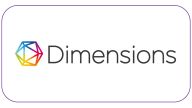Musik dan Otak dalam Neuropsikologi: Studi Visualisasi Tren Penelitian dengan Analisis Bibliometrik
Abstract
Neuropsikologi dianggap sebagai disiplin ilmu yang berkembang pesat. Dengan mendefinisikan parameter deskriptif publikasi, mengilustrasikan pola pengutipan, mengekstraksi kata kunci penulis, dan mengevaluasi kinerja penelitian pada tema musik dan otak. Analisis bibliometrik ini memberikan wawasan mengenai perkembangan bidang penelitian neuropsikologi mengenai musik dan otak, tidak hanya memetakan literatur namun juga secara kritis mengidentifikasi tema mendasar, dan keterhubungan dalam kumpulan pengetahuan yang ada. Data diperoleh dari database Scopus dan WOS sebanyak 3596 dokumen sejak tahun 1964 hingga sekarang. Penelitian ini mengidentifikasi penulis yang paling berpengaruh, universitas dan negara yang paling produktif terkait musik dan otak, trend topik penelitian yang terkait dengan musik dan otak, perkembangan penelitian bidang musik dan otak dari waktu ke waktu makalah yang telah mendukung konsep penelitian musik dan otak serta konsep utama bidang penelitian music dan otak. Secara keseluruhan dapat disimpulkan bahwa bidang studi neuropsikologi berkembang, dengan teknik dan arah baru yang dikembangkan. Oleh karena itu, analisis menyeluruh mengenai penelitian musik dan otak di berbagai bidang studi dapat membantu para sarjana dan profesional dalam memajukan pemahaman masa depan di bidang ini.
Keywords
Full Text:
PDFReferences
Agapaki, M., Pinkerton, E. A., & Papatzikis, E. (2022). Music and neuroscience research for mental health, cognition, and development: Ways forward. Frontiers in Psychology, 13(976883), 1-6. https://doi.org/10.3389/fpsyg.2022.976883
Bakerjian, D., Bettega, K., Cachu, A. M., Azzis, L., & Taylor, S. (2020). The impact of music and memory on resident level outcomes in California nursing homes. Journal of the American Medical Directors Association, 21(8), 1045-1050. https://doi.org/10.1016/j.jamda.2020.01.103
Altenmüller, E. (1986). Electrophysiological correlates of music processing in the human brain. European Archives of Psychiatry and Neurological Sciences, 235, 342-354. https://doi.org/10.1007/BF00381003
Bartel, L. (2009). This is your brain on music: The science of a human obsession (review). In University of Toronto Quarterly, 78(1), 160-161. https://doi.org/10.1353/utq.0.0355
Bengtsson, S. L., Nagy, Z., Skare, S., Forsman, L., Forssberg, H., & Ullén, F. (2005). Extensive piano practicing has regionally specific effects on white matter development. Nature neuroscience, 8(9), 1148-1150. https://doi.org/10.1038/nn1516
Blood, A. J., & Zatorre, R. J. (2001). Intensely pleasurable responses to music correlate with activity in brain regions implicated in reward and emotion. Proceedings of the National Academy of Sciences, 98(20), 11818–11823. https://doi.org/10.1073/pnas.191355898
Brattico, E., Tervaniemi, M., & Picton, T. W. (2003). Effects of brief discrimination-training on the auditory N1 wave. Neuroreport, 14(18), 2489-2492. https://journals.lww.com/neuroreport/
Brown, R. M., Zatorre, R. J., & Penhune, V. B. (2015). Expert music performance: cognitive, neural, and developmental bases. Progress in Brain Research, 217, 57–86. https://doi.org/10.1016/bs.pbr.2014.11.021
Buhusi, C. V., & Meck, W. H. (2005). What makes us tick? Functional and neural mechanisms of interval timing. Nature reviews neuroscience, 6(10), 755-765. https://doi.org/10.1038/nrn1764
Chanda, M.S. & Letivin, D.J. (2013). Feature Review: The neurochemistry of Music. Trends in Cognitive Science, 17(4), 179-193. https://doi.org/10.1016/j.tics.2013.02.007
De Witte, M., da Silva Pinho, A., Stams, G. J., Moonen, X., Bos, A. E. R., & van Hooren, S. (2022). Music therapy for stress reduction: A systematic review and meta-analysis. Health Psychology Review, 16(1), 134-159. https://doi.org/10.1080/17437199.2020.1846580
Diaz Abrahan, V., Shifres, F., & Justel, N. (2020b). Musical improvisation modulates emotional memory. Psychology of Music, 48(4), 465–479. https://doi.org/10.1177/0305735618810793
Dileo, C. & Bradt, J. (2007). Music Therapy: Applications to stress management. In principles and practice of stress management. Guilford Press. https://www.worldcat.org/title/principles-and-practice-of-stress-management/oclc/144770991
Dieterich-Hartwell, R. M. (2019). Music, movement, and emotions: an inquiry with suggestions for the practice of dance/movement therapy. Body, Movement and Dance in Psychotherapy, 14(4), 249-263. https://doi-org/10.1080/17432979.2019.1676310
Garrido, S., du Toit, M., & Meade, T. (2022). Music listening and emotion regulation: Young people's perspective on strategies, outcomes, and intervening factors. Psychomusicology: Music, Mind, and Brain, 32(1-2), 7-14. https://doi.org/10.1037/pmu0000285
Gosselin, N., Peretz, I., Noulhiane, M., Hasboun, D., Beckett, C., Baulac, M. & Samson, S. (2005). Impaired recognition of scary music following unilateral temporal lobe excision. Brain, 128, 628–640. https://doi.org/10.1093/brain/awh420
Gosselin, N., Peretz, I., Johnsen, E. & Adolphs, R. (2007). Amygdala damage impairs emotion recognition from music. Neuropsychologia, 45, 236–244. https://doi.org/1016/j.neuropsychologia.2006.07.012
Gosselin, N., Peretz, I., Hasboun, D., Baulac, M. & Samson, S. (2011). Impaired recognition of musical emotions and facial expressions following anteromedial temporal lobe excision. Cortex, 47, 1116–1125, https://doi.org/10.1016/j.cortex.2011.05.012
Hsieh, S., Hornberger, M., Piguet, O. & Hodges, J. (2012). Brain correlates of musical and facial emotion recognition: evidence from the dementias. Neuropsychologia, 50, 1814–1822. https://doi.org/10.1016/j.neuropsychologia.2012.04.006
Hou, J., Song, B., Chen, A.C.N., Sun, C., Zhou, J., Zhu, H. & Beauchaine, T.P., (2017). Review on neural correlates of emotion regulation and music: implications for emotion dysregulation. Frontiers in Psychology, 8(501), 1-8. https://doi.org/10.3389/fpsyg.2017.00501
Janata, P., Tillmann, B., & Bharucha, J. J. (2002). Listening to polyphonic music recruits domain-general attention and working memory circuits. Cognitive, Affective, & Behavioral Neuroscience, 2, 121-140. https://doi.org/10.3758/CABN.2.2.121
Juslin, P. N., & Västfjäll, D. (2008). Emotional responses to music: The need to consider underlying mechanisms. Behavioral and brain sciences, 31(5), 559-575. https://doi.org/10.1017/S0140525X08005293
Justel, N., Diaz Abrahan, V., Moltrasio, J., & Rubinstein, W. (2023). Differential effect of music on memory depends on emotional valence: An experimental study about listening to music and music training. Cogent Psychology, 10(1), 2234692. https://doi.org/10.1080/23311908.2023.2234692
Kernbach, J., Rogenmoser, L., Schlaug, G., & Gaser, C. (2018). Keep your brain young with music: Insights from machine learning and brain imaging. Innovation in Aging, 2(1), 849. https://doi.org/10.1093/geroni/igy023.3163
Koelsch, S., Schröger, E., & Tervaniemi, M. (1999). Superior pre-attentive auditory processing in musicians. Neuroreport, 10(6), 1309-1313. https://journals.lww.com/neuroreport/
Koelsch, S., Fritz, T., Cramon, D. Y., Müller, K. & Friederici, A. D. (2006). Investigating emotion with music: an fMRI study. Human Brain Mapping, 27, 239-250. https://doi.org/10.1002/hbm.20180
Koelsch, S., Skouras, S., Fritz T., Herrera P., Bonhage, C., Kussner, M. & Jacobs, A.M. (2013). The roles of superficial amygdala and auditory cortex in music-evoked fear and joy. Neuroimage 81, 49–60. https://doi.org/10.1016/j.neuroimage.2013.05.008
Koelsch, S. (2014). Brain correlates of music-evoked emotions. Nature Reviews Neuroscience, 15(3), 170–180. https://doi.org/10.1038/nrn3666
Lee, S. E., Kim D. C., Han, Y. J. (2019). A neural basis of unpleasant emotional processing in modified guided imagery and music: An fMRI study. Nordic Journal of Music Therapy, 28(5), 441-457. https://doi.org/10.1080/08098131.2019.1623297
Levitin, D. J. (2006). This is your brain on music: The science of a human obsession. Dutton Penguin Group Inc.
Levitin, D. J. (2013). Neural correlates of musical behaviors a brief overview. Music Therapy Perspectives, 31(1), 15–24. https://doi.org/10.1093/mtp/31.1.15
Martínez-Molina, N., Mas-Herrero, E., Rodríguez-Fornells, A., Zatorre, R.J., MarcoPallarés, J., 2016. Neural correlates of specific musical anhedonia. Proceeding of the National Academy of Science, 113(46), E7337-E7345. https://doi.org/10.1073/pnas.1611211113.
McCollum, S. (2019). Your brain on music: The sound system between your ears. The Kennedy Center.
Mitterschiffthaler, M. T., Fu, C. H., Dalton, J. A., Andrew, C. M. & Williams, S. C. (2007). A functional MRI study of happy and sad affective states evoked by classical music. Hum. Brain Mapp, 28, 1150–1162. https://doi.org/10.1002/hbm.20337
Moore, K. S. (2013). A systematic review on the neural effects of music on emotion regulation: Implications for music therapy practice. Journal of Music Therapy, 50(3), 198-242. https://doi.org/10.1093/jmt/50.3.198
Morlevy, K. A., & Goldfarb L. (2022). The effect of background sounds on mind wandering. Psychological Research, 87, 1848-1861. https://doi.org/10.1007/s00426-022-01751-2
Mueller, K., Mildner, T., Fritz, T., Lepsien, J., Schwarzbauer, C., Schroeter, M. L. & Moller, H.E.. (2011). Investigating brain response to music: a comparison of different fMRI acquisition schemes. Neuroimage, 54, 337–343. https://doi.org/10.1016/j.neuroimage.2010.08.029
Musacchia, G., & Khalil, A. (2020). Music and learning: Does music make you smarter?. Frontiers for Young Minds, 8(81), 1-6. https://doi.org/10.3389/frym.2020.00081
Nikolić, I. (2021). Specificities of stimulating musical talent within formal musical education. Visual Arts and Music, 7(1), 65–74. https://doi-org/10.22190/FUVAM2101065N
Olszewska, A. M., Gaca, M., Herman, A. M., Jednoróg, K., & Marchewka, A. (2021). How musical training shapes the adult brain: Predispositions and neuroplasticity. Frontiers in Neuroscience, 15(630829), 1-16. https://doi.org/10.3389/fnins.2021.630829
Pascual-Leone, A., Nguyet, D., Cohen, L. G., Brasil-Neto, J. P., Cammarota, A., & Hallett, M. (1995). Modulation of muscle responses evoked by transcranial magnetic stimulation during the acquisition of new fine motor skills. Journal of neurophysiology, 74(3), 1037-1045. https://doi.org/10.1152/jn.1995.74.3.1037
Patel, A. D. (2003). Language, music, syntax and the brain. Nature neuroscience, 6(7), 674-681. https://doi.org/10.1038/nn1082
Paus, T., Zatorre, R. J., Hofle, N., Caramanos, Z., Gotman, J., Petrides, M., & Evans, A. C. (1997). Time-related changes in neural systems underlying attention and arousal during the performance of an auditory vigilance task. Journal of cognitive neuroscience, 9(3), 392-408. https://doi.org/10.1162/jocn.1997.9.3.392
Pereira C. S., Teixeira, J., Figueiredo, P., Xavier, J., Castro, S. L., & Brattico, E. (2011). Music and Emotions in the Brain: Familiarity Matters. PlosOne, 6(11), 1-9. https://doi.org/10.1371/journal.pone.0027241
Peretz, I. (1985). Asymétrie hémisphérique dans les amusies. Revue Neurologique (Paris), 141(3), 169-183. http://pascal-francis.inist.fr/vibad/index.php?action=getRecordDetail&idt=9245085
Pritchard, A. (1969). Statistical bibliography or bibliometrics. Journal of Documentation, 25, 348-349. https://www.researchgate.net/publication/236031787_Statistical_Bibliography_or_Bibliometrics
Rauscher, F. H., Shaw, G. L., & Ky, C. N. (1993). Music and spatial task performance. Nature, 365(6447), 611–611. https://doi.org/10.1038/365611a0
Repp, B. H. (2005). Sensorimotor synchronization: A review of the tapping literature. Psychonomic bulletin & review, 12, 969-992. https://doi.org/10.3758/BF03206433
Salimpoor, V. N., Benovoy, M., Larcher, K., Dagher, A., & Zatorre, R. J. (2011). Anatomically distinct dopamine release during anticipation and experience of peak emotion to music. Nature neuroscience, 14(2), 257-262. https://doi.org/10.1038/nn.2726
Salimpoor, V. N., van den Bosch, I., Kovacevic, N., McIntosh, A. R., Dagher, A., & Zatorre, R. J. (2013). Interactions between the nucleus accumbens and auditory cortices predict music reward value. Science, 340(6129), 216–219. https://doi.org/10.1126/science.1231059
Schlaug, G., Jäncke, L., Huang, Y., Staiger, J. F., & Steinmetz, H. (1995). Increased corpus callosum size in musicians. Neuropsychologia, 33(8), 1047-1055. https://doi.org/10.1016/0028-3932(95)00045-5
Shirer, W. R., Ryali, S., Rykhlevskaia, E., Menon, V., & Greicius, M. D. (2012). Decoding subject-driven cognitive states with whole-brain connectivity patterns. Cerebral cortex, 22(1), 158-165. https://doi.org/10.1093/cercor/bhr099
Siragusa, M.A., Brizard, B., Dujardin, P. A., Remenieras, J., Patat, F., Gissot, V., Camus, V., Belzung, C., El-Hage, W., Wosch, T. & Desmidt, T. (2020). When classical music relaxes the brain: an experimental study using Ultrasound Brain Tissue Pulsatility Imaging. International Journal of Psychology, 150, 29-36. https://doi.org/10.1016/j.ijpsycho.2020.01.007
Shu, Y. (2023). Influence of music education in college on development of musical talents and creative (divergent) thinking of students (La influencia de la educación musical formal en el talento musical y el pensamiento creativo (divergente) de los estudiantes), Culture and Education, 35(3), 622-662. https://doi-org/10.1080/11356405.2023.2231304
Tervaniemi, M., Ilvonen, T., Karma, K., Alho, K., & Näätänen, R. (1997). The musical brain: brain waves reveal the neurophysiological basis of musicality in human subjects. Neuroscience letters, 226(1), 1-4. https://doi.org/10.1016/S0304-3940(97)00217-6
Torres-Cardona, H. F., & Aguirre-Grisales, C. (2022). Brain-computer Music interface, a Bibliometric Analysis. Brain-Computer Interfaces, 9(4), 226-245. https://doi.org/10.1080/2326263X.2022.2109313
Vuust, P., Pallesen, K. J., Bailey, C., Van Zuijen, T. L., Gjedde, A., Roepstorff, A., & Østergaard, L. (2005). To musicians, the message is in the meter: Pre-attentive neuronal responses to incongruent rhythm are left-lateralized in musicians. Neuroimage, 24(2), 560-564. https://doi.org/10.1016/j.neuroimage.2004.08.039
Wong, P. C., Skoe, E., Russo, N. M., Dees, T., & Kraus, N. (2007). Musical experience shapes human brainstem encoding of linguistic pitch patterns. Nature neuroscience, 10(4), 420-422. https://doi.org/10.1038/nn1872
Zatorre, R. J., Chen, J. L., & Penhune, V. B. (2007). When the brain plays music: auditory–motor interactions in music perception and production. Nature reviews neuroscience, 8(7), 547-558. https://doi.org/10.1038/nrn2152
Zheng, W. L., & Lu, B. L. (2015). Investigating critical frequency bands and channels for EEG-based emotion recognition with deep neural networks. IEEE Transactions on autonomous mental development, 7(3), 162-175. https://doi.org/10.1109/TAMD.2015.2431497
Zupic, I., & Čater, T. (2015). Bibliometric methods in management and organization. Organizational research methods, 18(3), 429-472. https://doi.org/10.1177/1094428114562629
DOI: http://dx.doi.org/10.24014/pib.v5i2.26518
Refbacks
- There are currently no refbacks.
Redaksi Psikobuletin: Buletin Ilmiah Psikologi
Publisher: Universitas Islam Negeri Sultan Syarif Kasim Riau
Jl. H.R. Soebrantas Km. 15.5 No. 155 Gedung Fakultas Psikologi UIN Sultan Syarif Kasim Riau Kel. Tuahmadani Kec. Tampan Pekanbaru - Riau 28293.
E-mail : psikobuletin@uin-suska.ac.id / Website :http://ejournal.uin-suska.ac.id/index.php/Psikobuletin
Psikobuletin : Buletin Ilmiah Psikologi by Fakultas Psikologi is licensed under a Creative Commons Attribution 4.0 International License.



31.png)





